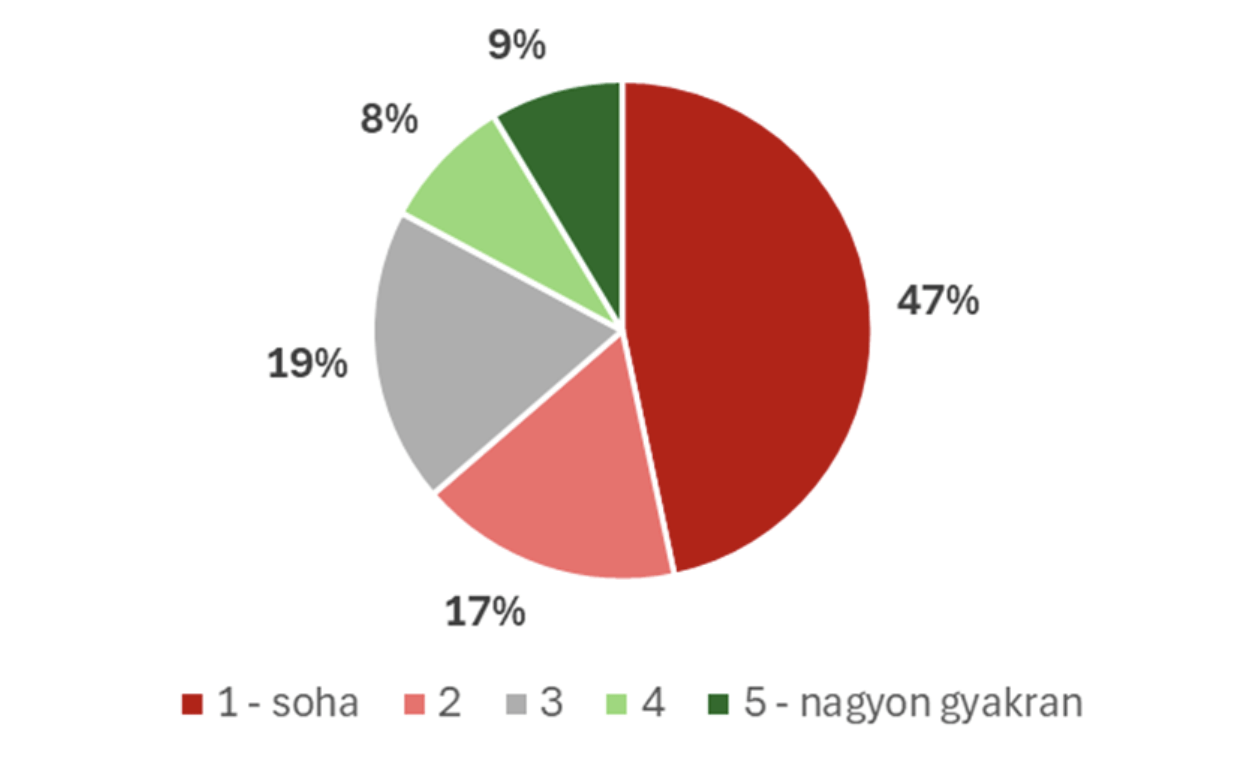Artificial Intelligence in the Workplace: Who Uses AI?
The GKI conducted a survey in July on a representative sample of 1,000 people in Hungary to examine the prevalence of artificial intelligence (AI). Who uses AI and for what purposes? How widespread is it in Hungarian workplaces? We seek the answers to these questions.
Nearly half of respondents never use AI for their work or studies, and a further 17% do so only very rarely. Meanwhile, 8% use it often, and 9% use it very often. When it comes to home use, the figures are somewhat more favourable: 64% have used AI for personal purposes (one-third of them – i.e., 20% overall – do so frequently).
How often do you use AI-based software in your work/studies?
From a demographic perspective, the largest differences are observed by age group: the younger someone is, the more likely they are to use artificial intelligence.
Among students surveyed, 90% have used AI for their studies, with 42% using it very often and another 16% often. Among active employees, 56% use some form of AI application in their work, with 17% using it often or very often. The spread of AI is likely to accelerate in the future as younger generations enter the labour market.
Attitudes towards AI use in the workplace – balance score by age group and occupation (lower values indicate lower usage frequency)

Source: GKI survey
Source: GKI. Note: responses were weighted on a scale from -100 to +100, where -100 indicates no AI use at all, 0 indicates moderate frequency of use, and +100 indicates very frequent AI use.
By occupation, self-employed professionals are the most likely to use artificial intelligence in their work. They are followed by managers and those in office positions in the private sector. AI use is less common among entrepreneurs, and even less so among office workers in the public sector.
In the capital – partly due to the greater share of the services sector – the proportion of AI users is higher than in other settlement types. Encouragingly, there are no observable differences in AI usage between men and women.
Although 70% of respondents perceive some level of threat from AI to their jobs in the next five years, only 5% consider it significant. Young people, who are generally more enthusiastic users of AI, are also more likely to fear for their jobs. Similarly, students are more concerned about their future employment than those who are already working. The sense of threat is most pronounced among office employees in the private sector, while self-employed professionals are less likely to fear that AI will take their jobs.
Related news
GVH: Artificial intelligence will also transform competitive conditions
🎧 Hallgasd a cikket: Lejátszás Szünet Folytatás Leállítás Nyelv: Auto…
Read more >AI-ready NAT creation is required
🎧 Hallgasd a cikket: Lejátszás Szünet Folytatás Leállítás Nyelv: Auto…
Read more >Careless corporate use of artificial intelligence can also violate trade secrets
🎧 Hallgasd a cikket: Lejátszás Szünet Folytatás Leállítás Nyelv: Auto…
Read more >Related news
Rapid changes, adaptive path
🎧 Hallgasd a cikket: Lejátszás Szünet Folytatás Leállítás Nyelv: Auto…
Read more >Business Days elective course: a weekend programme establishing a new tradition
🎧 Hallgasd a cikket: Lejátszás Szünet Folytatás Leállítás Nyelv: Auto…
Read more >Quality comes at a price!
🎧 Hallgasd a cikket: Lejátszás Szünet Folytatás Leállítás Nyelv: Auto…
Read more >






